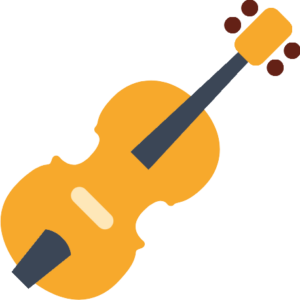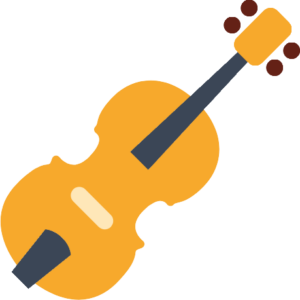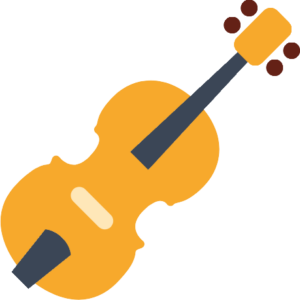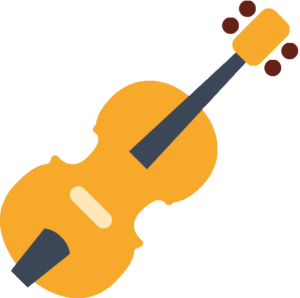Learning how to play violin: for beginners
How to play the violin step by step:
Introduction: Parts of the violin
Learning how to play the violin is a lot easier than you might think, especially if you’re just starting out.
The good news is that there are a lot of resources available for learning how to play the violin, whether you want to learn from an expert teacher or from an online course. In fact, there are several great online courses that teach beginners how to play violin—and they’re accessible from anywhere in the world!
If you’re looking for a place where you can learn violin at your own pace and on your own schedule, we recommend taking advantage of one of these online courses. They’ll walk you through everything from tuning your instrument to playing basic notes and chords. You’ll also learn about different styles of music and how different composers have incorporated those styles into their compositions over time (like Mozart or Bach).
1- How to tighten violin bow
Before you get started you will need to know how to prepare your violin bow:
1. First, hold the bow in a horizontal position.
2. Then, turn it vertically and slide the screw to tighten it up.
3. You’re all set!
2- How to rosin violin bow
Step 1: Remove the old rosin. Use an anti-static brush to clean off the section and oil. Use alcohol to remove all remaining sticky residue on the horsehair.
Step 2: Take a pinch of rosin, rub it between your thumb and index fingers, then place the rosin on the bow hair. Gently spread to coat evenly.
Step 3: Place your violin under your chin and hold the bow at upper right corner. Be sure that you are not pulling down with all of your strength. Hold it gently so you do not damage your instrument or yourself!
Step 4: Select a single string on the violin and begin to play it lightly. As you press down it should begin to squeak. Now move up and down on each string until you hear a clear tone from each one. Once everything sounds good then you can play music!
3- How to tune your violin
The first step to tuning your violin is to tune the A string.
To do so, first play a low note on the A string and listen carefully for any “wolf” notes (notes that sound slightly off-key). If you hear any, use your tuner or just play around with the string until you find the right note. Once you’ve found it, match it up with one of your reference tones.
Now, tune the D string to the same note as the A string by turning its tuning peg in a clockwise direction until they’re both in tune. Make sure to go slowly and check frequently to make sure you don’t overshoot or undershoot!
Once you’ve tuned those two strings, you can move on to tuning your E string. Tune this one by playing an open fifth position (the first five notes on your fingerboard) and comparing it to one of your reference tones—you can find these by using a tuner or just playing along with them!
Then move on to your G string: tune this one by playing an open fourth position and comparing it to a reference tone—same deal here as before! And finally, tune your B
Tips:
- The first times, you can use a tuner!
- Next times it would be good that you get use to do it by ear.
- Check if you tuned your violin correctly with a digital tuner
4- How to hold your violin - Bow
1. Place your index finger on the A string and your thumb on the E string. There are many different ways to hold a violin bow, but this is the most common way to start.
2. Position yourself so that you’re looking down at the violin neck, with the instrument in front of you. Your left side should be facing away from the scroll of your violin and towards its tailpiece (the part that holds the strings).
3. You’ll want to hold your bow with one hand and support it with the other hand so that it’s not touching the floor or any other surface. The part of the bow that’s touching these surfaces will make noise when you play it!
5- How to hold your violin - Neck
There are plenty of ways to hold a violin, but here’s our favorite method for beginners:
1. Put the instrument on your shoulder, with the scroll (the end of the violin) facing away from your body.
2. Hold it there with your chin and right hand.
3. Use your left hand to hold the bow correctly, with your thumb and index finger holding a gentle grip on each side of it.
6- How to hold your violin - Left hand and your fingers on the fingerboard
Let’s say you’re a beginner violinist. You’ve got yourself a violin, and you’re ready to start playing! But how do you hold your left hand?
First, place your left thumb on the neck of the violin. Your thumb should be at the top of the neck, right next to where it meets the body of your instrument.
Now place your left index finger on the same spot as your thumb: right by that seam where the body meets the neck.
Next, place your other three fingers on their corresponding strings: middle finger on middle string, ring finger on G string (third from bottom), and pinky finger on D string (fourth from bottom).
That’s it! Your left hand is ready for action!
7- How to play your violin strings
Lorem ipsum dolor sit amet, consectetur adipiscing elit. Ut elit tellus, luctus nec ullamcorper mattis, pulvinar dapibus leo.
Violin finger setting (Number of the fingers)
Step 1: Place your fingers on the strings in this order: 1, 2, 3, 4.
Step 2: Press down with each finger as hard as you can.
Step 3: Now that you have mastered the basics of violin finger setting and pressing, it’s time to move on to the next step!
FAQ about violin learning
Have violin lessons with an online teacher or in the following cities!

Violin Lessons in Cork
[email protected] Let’s whatsapp! 🏠 Have professional Violin lessons in Cork, at the teacher’s studio or at home! 🎓 Our Violin teachers in Cork are certified

Violin Lessons in Luxembourg
[email protected] Let’s whatsapp! 🏠 Have professional Violin lessons in Luxembourg, at the teacher’s studio or at home! 🎓 Our Violin teachers in Luxembourg are certified

Violin Lessons in Brussels
[email protected] Let’s whatsapp! 🏠 Have professional Violin lessons in Brussels, at the teacher’s studio or at home! 🎓 Our Violin teachers in Brussels are certified

Violin Lessons in Amsterdam
[email protected] Let’s whatsapp! Violin Lessons in Amsterdam Damvibes Violin classes for Beginners to Advanced ✓ First trial violin lesson at home or at the teacher’s
Have a Violin Teacher!
Online & Face-to-face violin lessons
- 1 free trial lesson
- Conservatory-graduated teachers
- Learn violin technique, chords & your favourite violin songs
